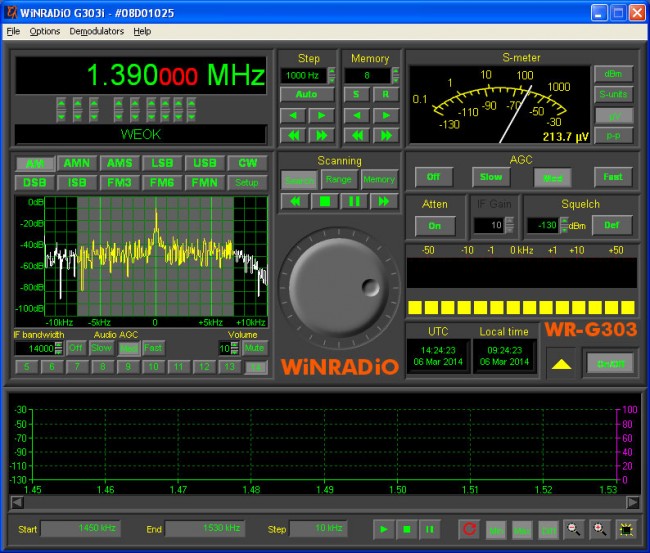The technical problems with AM broadcasting can be broken down into three broad categories:
- Interference from other AM stations
- Interference from unintentional radiators (AKA electrical noise)
- Poor receivers
Much of the poor fidelity issues with AM broadcast audio come from the narrow IF bandwidth of the typical AM receiver. Older AM receivers had much wider IF bandwidths, sometimes as much as 15 KHz +/- carrier. As the AM band was overfilled with stations starting in the late 1940s, this became a big problem. The tube-type front ends with great sensitivity but not very much selectivity was unable to cope with adjacent channel interference, leading to what was known as “monkey chatter.” This type of interference can be technically described as the higher audio frequency peaks from adjacent channel stations being demodulated. Those hearing this type of interference found it very annoying and rightly so. Thus, receiver manufacturers were deluged with complaints about the poor quality of their units. The solution was simple; narrow the bandwidth until the “monkey chatter” disappeared. This new de facto standard IF bandwidth turned out to be +/- 3 KHz carrier.
It does not take a rocket scientist to see that 3 KHz audio is slightly better than telephone quality. This was the beginning of the perceived AM low fidelity problem. In the meantime, FM broadcasting, after years of lagging behind in spite of its superior audio, made great strides into mainstream acceptance.
NRSC-1 was supposed to reduce this type of interference by limiting AM broadcasting stations’ audio bandwidth to 10 KHz. The idea was to attempt to keep the modulation index somewhat within the allotted channel. This standard was mandated by the FCC in 1989, after which receiver manufacturers were to change their design to allow for broader IF bandwidths, thus improving AM fidelity. There was even an AMAX standard adopted by some receiver manufacturers. Unfortunately, by this time, the majority of AM stations were transitioning from music to talk radio. The new standards were too little much too late.
A quick scan with a quality AM receiver shows that many stations are transmitting high-quality audio, which, with a properly adjusted IF bandwidth can sound remarkably good:

This is a screenshot from an SDR (Software Defined Radio) showing WEOK, Poughkeepsie, NY broadcasting the True Oldies Channel. The signal strength is slightly low, but this is a rural area and the noise floor is also low. I limited the bandwidth to +/- 7.5 KHz carrier because of the pre-emphasis used on most AM stations makes the high-end sound strident. Looking at the spectral display, there is more audio available beyond what I am listening to. This brings me to this; AM fidelity is not inherently inferior, it can sound quite good. There is no reason why AM receiver manufacturers cannot improve their products to include some advanced features;
- Variable IF bandwidth based on signal strength
- Variable user selected IF bandwidth
- Sharp selectivity – adjacent channel rejection
- Selectable sideband demodulation (carrier plus upper or carrier plus lower sideband)
While this will never sound as good as FM stereo, it still can sound pretty good, especially with older music recorded before say 1975 or so.
Manufacturers would have to have some impetus to include these features in their chipsets, such as multiple requests by listeners who are looking for better AM quality, which leads us back to programming…
The other issues with AM electrical noise reception and interference from other radio stations are surmountable, so long as there is a reason to. This, leads us back to… programming.
